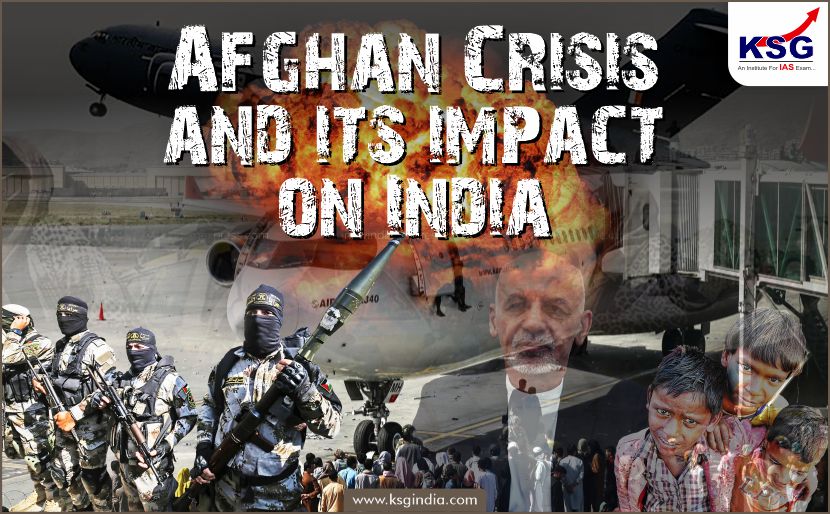Afghan Crisis and its impact on India

Taliban has captured Kabul, the capital of Afghanistan and its elected President has left the country. This has created a tough scenario for India and the world to manage.
Afghan Crisis and its impact on India

Taliban has captured Kabul, the capital of Afghanistan and its elected President has left the country. This has created a tough scenario for India and the world to manage.
Issues for India:
- Life and security of Indian citizens in Afghanistan: The first concern is to evacuate Indian diplomats, personnel and citizens based in Afghanistan.
- Threat of resurrection of terrorism: Groups such as the Lashkar-e-Taiba and the Jaish-e-Mohammad that have been keeping bases and training grounds along the southern provinces that border Pakistan could now have more ungoverned spaces to carry out attacks against India.
- Increasing power of Pakistan over Afghan affairs: The Taliban’s control will also mean a bigger hand for the Pakistani military and intelligence agencies to influence outcomes for the country, which will mandate a much smaller role for Indian development and infrastructure work that has won it goodwill over the past 20 years.
- Fate of Indian infrastructure projects: Trade through Afghanistan under a Taliban regime would be routed through Karachi and Gwadar, and the Indian investment in the Chabahar port, meant to circumvent Pakistan, may become unviable.
- Refugee issue: In absence of any refugee policy, India will have to take a call on incoming Afghan refugees and their future.
- Unstable neighbourhood: There is the threat of growing radicalisation and space for pan-Islamic terror groups in India’s neighbourhood. This was seen in South Asia the aftermath of the last pullout by foreign troops in Afghanistan, when the U.S. backed mujahideen defeated the Soviet Army in the 1980s, but also the rise of al-Qaeda and IS after the U.S. wars in Iraq, and then subsequent pullout from West Asia, especially after 2011.
Options before India:
- The first option is to stick to its principle of backing only a democratically-elected government in Kabul, and providing political and humanitarian support while that lasts.
- The second would be to go further and supply the ANDSF with military supplies, including ammunition and air power, possibly via the Iranian route.
- The third would be to accelerate contacts with the Taliban. However, this is unlikely to give India much leverage, given the Pakistan factor, as well as the fact that all regional and donor countries have already done so.
- Finally, India could simply wait and watch, until the chaos of conflict reveals a winning side, and weigh its options accordingly.
